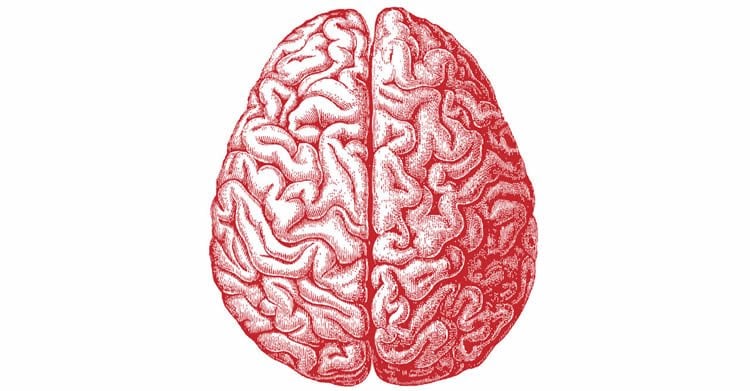An alarming 22 percent of U.S. children live in poverty, which can have long-lasting negative consequences on brain development, emotional health and academic achievement. A new study, published July 20 in JAMA Pediatrics, provides even more compelling evidence that growing up in poverty has detrimental effects on the brain.
In an accompanying editorial, child psychiatrist Joan L. Luby, MD, at Washington University School of Medicine in St. Louis, writes that “early childhood interventions to support a nurturing environment for these children must now become our top public health priority for the good of all.”
In her own research in young children living in poverty, Luby and her colleagues have identified changes in the brain’s architecture that can lead to lifelong problems with depression, learning difficulties and limitations in the ability to cope with stress.
However, her work also shows that parents who are nurturing can offset some of the negative effects on brain anatomy seen in poor children. The findings suggest that teaching nurturing skills to parents — particularly those who live below the poverty line — may provide a lifetime of benefit for children.
“Our research has shown that the effects of poverty on the developing brain, particularly in the hippocampus, are strongly influenced by parenting and life stresses experienced by the children,” said Luby, the Samuel and Mae S. Ludwig Professor of Child Psychiatry and director of Washington University’s Early Emotional Development Program.

The study in JAMA Pediatrics, by a team of researchers at the University of Wisconsin-Madison, found that low-income children had irregular brain development and lower standardized test scores, with as much as an estimated 20 percent gap in achievement explained by developmental lags in the frontal and temporal lobes of the brain.
“In developmental science and medicine, it is not often that the cause and solution of a public health problem become so clearly elucidated,” Luby wrote in the editorial. “It is even less common that feasible and cost-effective solutions to such problems are discovered and within reach.”
Based on this new research and what already is known about the damaging effects of poverty on brain development in children, as well as the benefits of nurturing during early childhood, “we have a rare roadmap to preserving and supporting our society’s most important legacy, the developing brain,” Luby writes. “This unassailable body of evidence taken as a whole is now actionable for public policy.”
Funding: Funding for Joan Luby’s research cited in the editorial comes from the National Institute of Mental Health of the National Institutes of Health (NIH). NIH grant numbers 1R01 MH098454-01A1 and 2R01 MH090786-06.
Source: WUSTL
Image Credit: The image is credited to Allan Ajifo and is licensed CC BY 2.0
Original Research: Full open access research for “Poverty’s Most Insidious Damage: The Developing Brain” by Joan L. Luby, MD in JAMA Pediatrics. Published only July 20 2015 doi:10.1001/jamapediatrics.2015.1682
Full open access research for “Association of Child Poverty, Brain Development, and Academic Achievement” by Nicole L. Hair, PhD; Jamie L. Hanson, PhD; Barbara L. Wolfe, PhD; and Seth D. Pollak, PhD in JAMA Pediatrics. Published only July 20 2015 doi:10.1001/jamapediatrics.2015.1475
Abstract
Association of Child Poverty, Brain Development, and Academic Achievement
Importance Children living in poverty generally perform poorly in school, with markedly lower standardized test scores and lower educational attainment. The longer children live in poverty, the greater their academic deficits. These patterns persist to adulthood, contributing to lifetime-reduced occupational attainment.
Objective To determine whether atypical patterns of structural brain development mediate the relationship between household poverty and impaired academic performance.
Design, Setting, and Participants Longitudinal cohort study analyzing 823 magnetic resonance imaging scans of 389 typically developing children and adolescents aged 4 to 22 years from the National Institutes of Health Magnetic Resonance Imaging Study of Normal Brain Development with complete sociodemographic and neuroimaging data. Data collection began in November 2001 and ended in August 2007. Participants were screened for a variety of factors suspected to adversely affect brain development, recruited at 6 data collection sites across the United States, assessed at baseline, and followed up at 24-month intervals for a total of 3 periods. Each study center used community-based sampling to reflect regional and overall US demographics of income, race, and ethnicity based on the US Department of Housing and Urban Development definitions of area income. One-quarter of sample households reported the total family income below 200% of the federal poverty level. Repeated observations were available for 301 participants.
Exposure Household poverty measured by family income and adjusted for family size as a percentage of the federal poverty level.
Main Outcomes and Measures Children’s scores on cognitive and academic achievement assessments and brain tissue, including gray matter of the total brain, frontal lobe, temporal lobe, and hippocampus.
Results Poverty is tied to structural differences in several areas of the brain associated with school readiness skills, with the largest influence observed among children from the poorest households. Regional gray matter volumes of children below 1.5 times the federal poverty level were 3 to 4 percentage points below the developmental norm (P < .05). A larger gap of 8 to 10 percentage points was observed for children below the federal poverty level (P < .05). These developmental differences had consequences for children’s academic achievement. On average, children from low-income households scored 4 to 7 points lower on standardized tests (P < .05). As much as 20% of the gap in test scores could be explained by maturational lags in the frontal and temporal lobes.
Conclusions and Relevance The influence of poverty on children’s learning and achievement is mediated by structural brain development. To avoid long-term costs of impaired academic functioning, households below 150% of the federal poverty level should be targeted for additional resources aimed at remediating early childhood environments.
“Association of Child Poverty, Brain Development, and Academic Achievement” by Nicole L. Hair, PhD; Jamie L. Hanson, PhD; Barbara L. Wolfe, PhD; and Seth D. Pollak, PhD in JAMA Pediatrics. Published only July 20 2015 doi:10.1001/jamapediatrics.2015.1475






